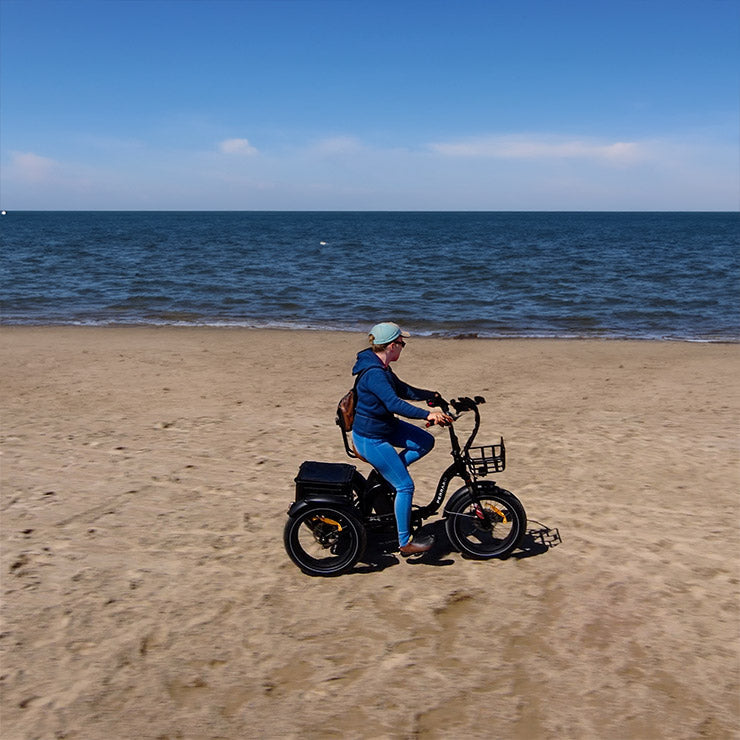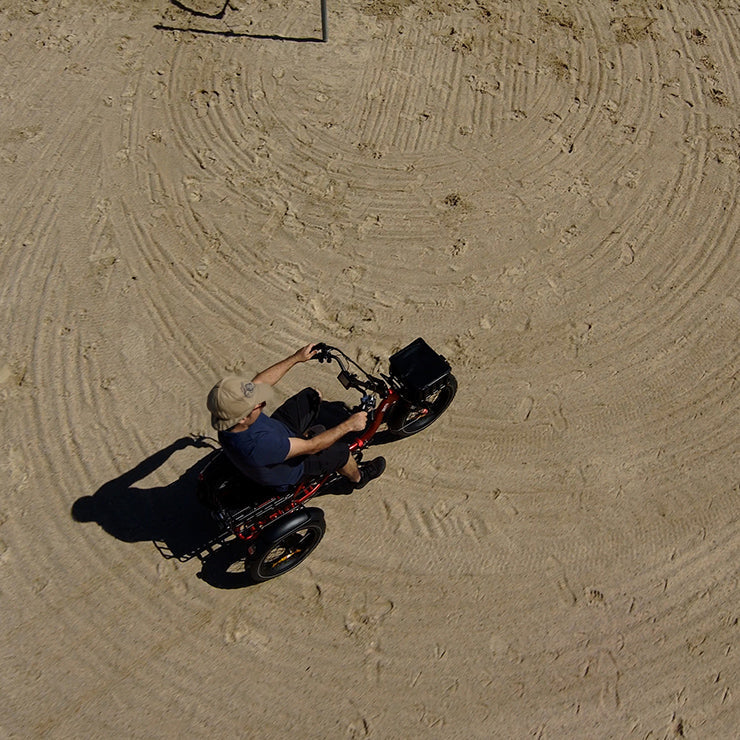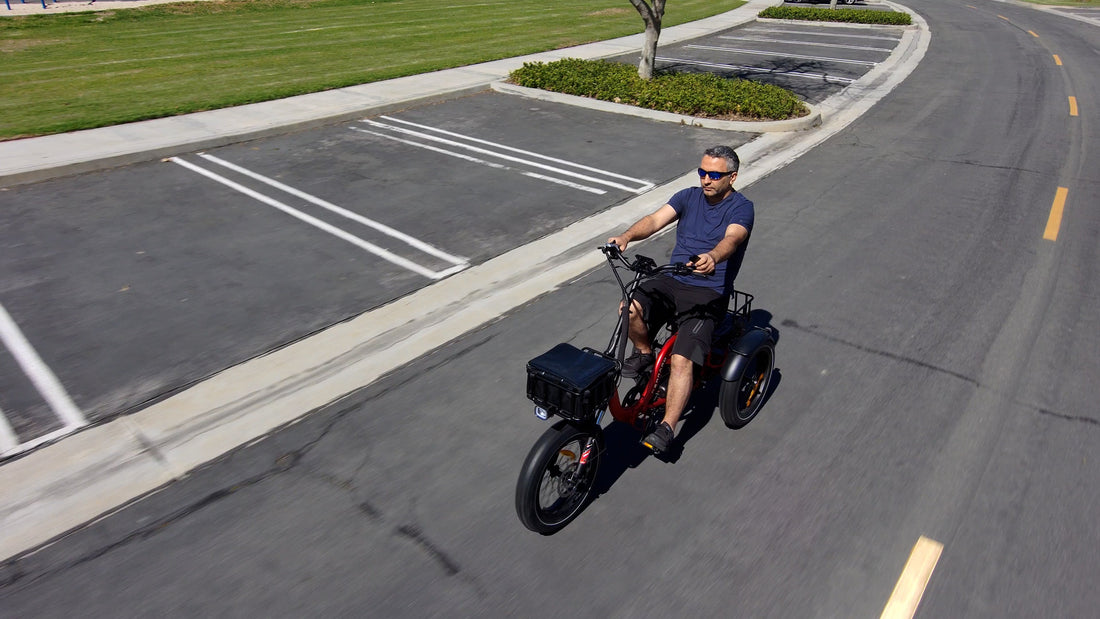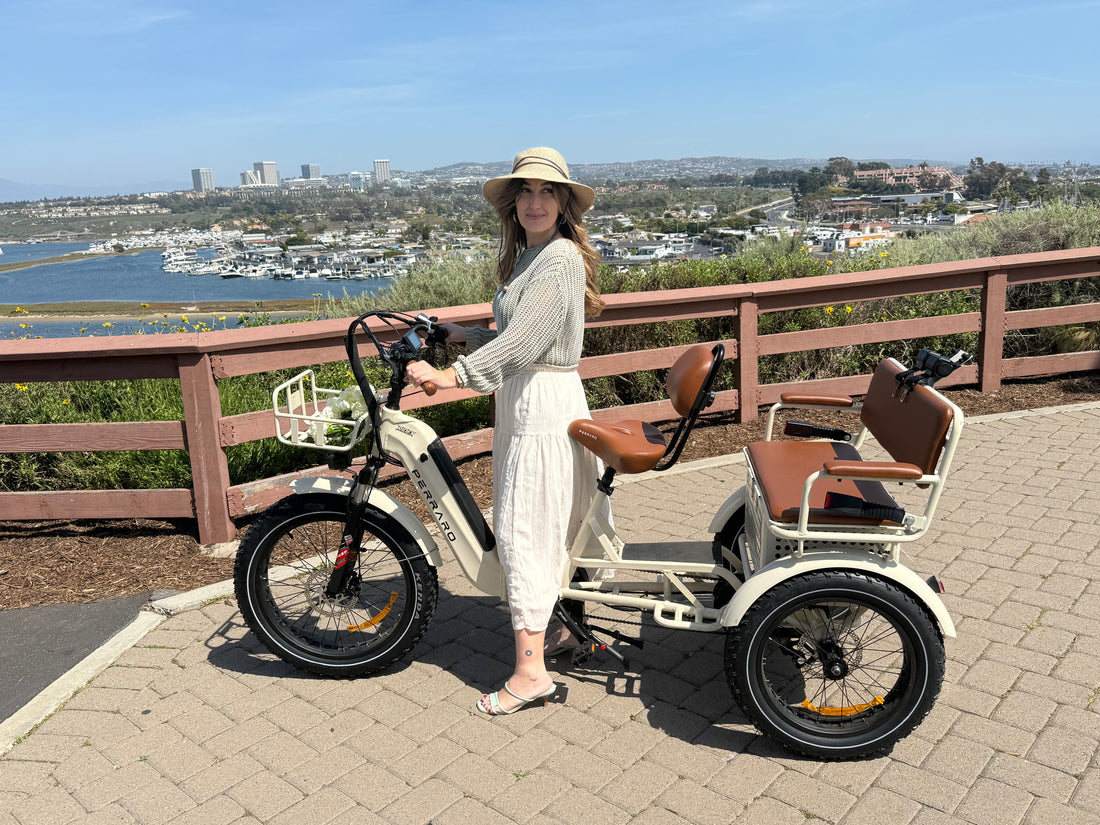The urban mobility landscape is in the midst of a revolutionary change, with electric trikes (or e-trikes) as a trendy, green, and easy mode of short-distance transportation.
For closing-mile transport, non-public travel, or tourism, electric-powered trikes offer a green method to replace fuel vehicles. But with intelligent cities and more complex streets, the question lingers: how can we make electric trike navigation efficient, secure, and convenient?
Enter Artificial Intelligence (AI)
AI is transforming many industries, and the electric vehicle sector is no exception. In the future, AI will play a pivotal role in shaping the way electric trikes are navigated, operated, and integrated into smart transportation networks. Here’s how.
1. Smarter Navigation Through Real-Time Route Optimisation
Older GPS navigation systems will fail in congested city centers. AI, on the other hand, can overcome static maps and apply real-time information to dynamically reroute.
Based on real-time traffic feeds, road closures, weather conditions, and even pedestrian traffic, AI-powered navigation solutions can offer the best possible route for using electric trikes.
For delivery drivers, that means less time stuck in traffic and more on-time deliveries. For commuters, it means getting to their destination faster with fewer stops or unexpected detours.
2. Enhanced Safety With Predictive AI Algorithms
Safety comes first, particularly for lighter vehicles like e-trikes sharing the road with faster, heavier ones. AI has the potential to greatly improve safety by analysing input from onboard sensors like cameras, Lidar, and radar to identify possible hazards.
Advanced Driver Assistance Systems (ADAS) driven by artificial intelligence (AI) can provide real-time warnings for:
- Pedestrian crossings
- Sudden roadblocks (like a car door opening)
- Drifting out of a lane
- Dangerously high speed levels for given road conditions
With evolving AI, even such systems can take over partly in emergency conditions, like using automatic brakes or adapting steering to avoid crashes.
3. Autonomous and Semi-Autonomous Driving Capabilities
Trucks and cars are no longer the only vehicles capable of autonomous movement. Autonomous electric trikes in regulated spaces, such as gated neighborhoods, warehouses, or universities.
These parameters can be configured so that, without human assistance, an AI follows predetermined routes, applies brakes at predetermined points, and reacts to environmental changes.
Semi-autonomous features like self-parking or self-maintenance-of-lane are on the horizon, but fully driverless trikes on public roads are still decades away due to technological and legislative barriers.
4. Personalized User Experiences
AI enhances the machine and the user experience. As technology in electric trikes advances, AI can enable personalizing navigation choices based on user behavior, preferences, and past travel data.
For instance, AI may learn that a rider likes routes with scenic beauty rather than heavily trafficked routes or prefers riding on flat paths rather than going up steep slopes. Gradually, it may personalize its suggestions accordingly, giving a more personalized and enjoyable commute.
AI-powered voice assistants can also provide hands-free navigation assistance, suggest charging stations close by, or alert riders to weather-caused delays without taking their eyes off the road.
5. Operational Efficiency and Fleet Management
For businesses relying on electric trike fleets—delivery businesses, campus transportation services, or tour operators—AI can be a game changer. AI-driven fleet management software can:
- Monitor the usage patterns of vehicles.
- Schedule maintenance proactively
- Optimize charging schedules
-
Send trikes according to the demand forecast.
This translates to fewer breakdowns, better energy efficiency, and smoother day-to-day operations. AI can also track driver performance and offer tips for improvement, enhancing safety and productivity.
6. Smart City Integration
As cities begin to adopt smart infrastructure—think intelligent traffic lights, vehicle-to-everything (V2X) communication, and sensor-laden roads, AI-fueled electric trikes will be better equipped to handle them.
Imagine a trike that is warned by an oncoming traffic light, slowing down itself to avoid an unwelcome halt. Or a trike that communicates with public transport networks to enable seamless intermodal travel options.
All this level of integration will reduce congestion, improve road safety, and create a better-integrated transport system where electric trikes are a fundamental part.
7. Sustainable Urban Planning and Data Insights
Cities are increasingly depending on data to make transport policy. AI devices embedded on e-trikes are able to gather and examine anonymous data about movement, traffic density, and environmental conditions. Overall, it produces beneficial intelligence for city planners to:
- Improve cycling networks
- Identify high-risk traffic areas.
- Plan new routes or green corridors.
By enabling access and use of this data, AI directly supports particular riders while contributing to broader sustainable development goals.
Challenges to Remember
Even with thrilling potential, its integration into trike electric vehicle navigation also poses challenges:
- Privacy concerns over data harvesting and surveillance
- Significant upfront cost of implementing AI technology, especially for small-scale enterprises
- Stability of AI under irregular or unmanaged environments
- Compliance and regulation challenges relating to self-governing transport technology
Solving these challenges will take joint efforts from manufacturers, city managers, tech developers, and consumers.
Final Thoughts
AI is not a buzzword; it's a force of revolution that's going to transform the way electric trikes act and interact with the world around them. From safer mobility and personalized routing to autonomous capabilities and city integration, AI is the enabler that unlocks the true potential of electric trikes in our future mobility ecosystem.
As technology advances and cities become smart, electric trikes with smart navigation systems will find their way not only into safer and more efficient modes of transport but into the very fabric of sustainable urban transport.
Finally, the future of electric trike navigation isn't really about taking you there—it's about being smarter, quicker, and cleaner.





